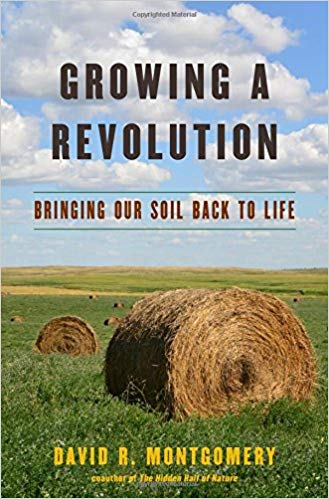New technologies and genetically modified crops are usually invoked as the key to feeding the world’s growing population. But a widely overlooked opportunity lies in reversing the soil degradation that has already taken something like a third of global farmland out of production.
It is critical we do so. In 2015, a U.N. Food and Agricultural Organization (FAO) report concluded that ongoing soil degradation reduces global harvests by a third of a percent each year under conventional farming practices. In some parts of the U.S. I’ve visited, the rich black topsoil that settlers once plowed is gone, eroded away leaving farmers tilling anemic subsoil.
So far, genetically modified crops have not delivered the higher yields proponents promised, while creating far more new problems than promised.
Fortunately, there is another way forward. Rebuilding fertility on the world’s degraded farmland is not only possible; we could do it remarkably fast—and profitably—with something called “regenerative agriculture.” In a new book, Growing a Revolution: Bringing Our Soil Back to Life,
University of Washington professor David R. Montgomery explores the current explosion of regenerative agriculture.
Back in 2002, REVITALIZATION publisher Storm Cunningham‘s book, The Restoration Economy, had just one chapter on the subject. Now, it has an entire book.
The problem of agriculture is as old as civilization. Throughout history, great societies that abused their land withered into poverty or disappeared entirely. Now we risk repeating this ancient story on a global scale due to ongoing soil degradation, a changing climate, and a rising population.
But there is reason for hope. David R. Montgomery introduces us to farmers around the world at the heart of a brewing soil health revolution that could bring humanity’s ailing soil back to life remarkably fast. Growing a Revolution draws on visits to farms in the industrialized world and developing world to show that a new combination of farming practices can deliver innovative, cost-effective solutions to problems farmers face today.
Cutting through standard debates about conventional and organic farming, Montgomery explores why practices based on the principles of conservation agriculture help restore soil health and fertility. Farmers he visited found it both possible and profitable to stop plowing up the soil and blanketing fields with chemicals. Montgomery finds that the combination of no-till planting, cover crops, and diverse crop rotations provides the essential recipe to rebuild soil organic matter. Farmers using these unconventional practices cultivate beneficial soil life, smother weeds, and suppress pests while relying on far less, if any, fertilizer and pesticides.
These practices are good for farmers and the environment. Using less fossil fuel and agrochemicals while maintaining crop yields helps farmers with their bottom line. Regenerative practices also translate into farms that use less water, generate less pollution, lower carbon emissions―and stash an impressive amount of carbon underground. Combining ancient wisdom with modern science, Growing a Revolution lays out a solid case for an inspiring vision where agriculture becomes the solution to environmental problems, helping feed us all, cool the planet, and restore life to the land.

